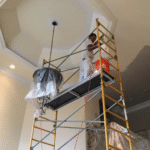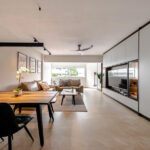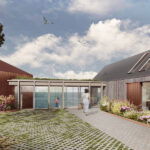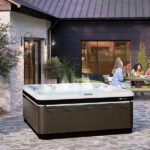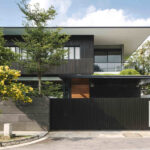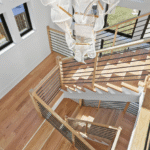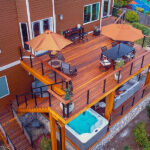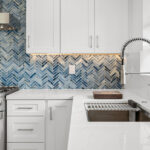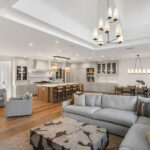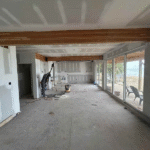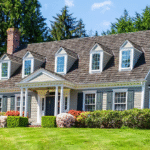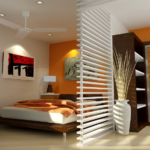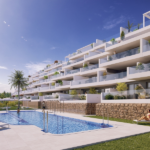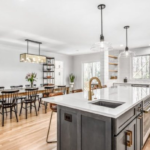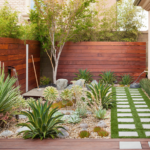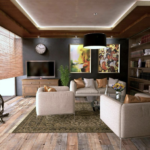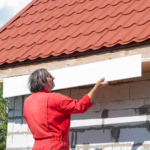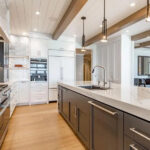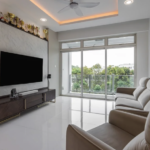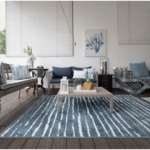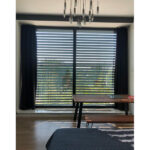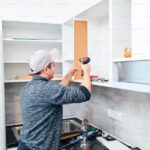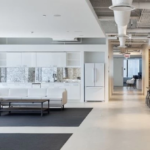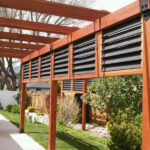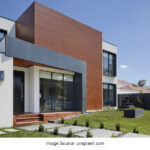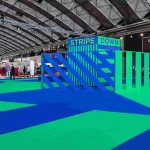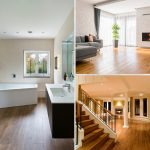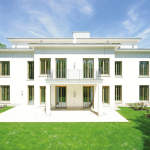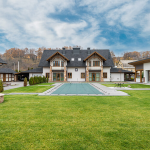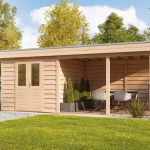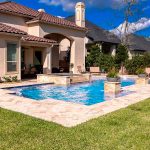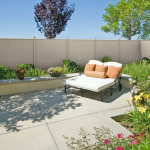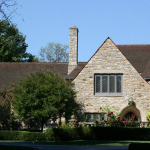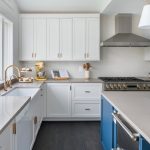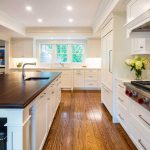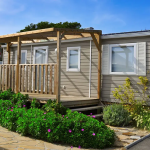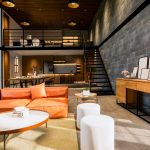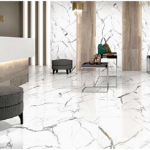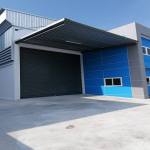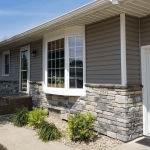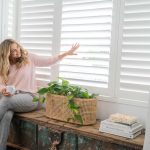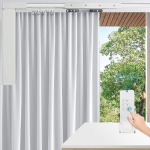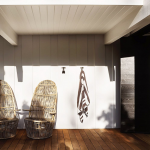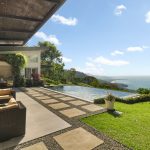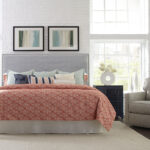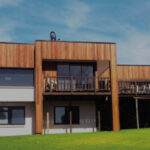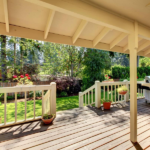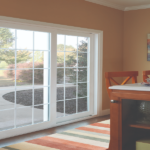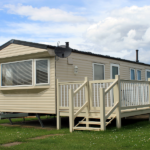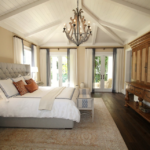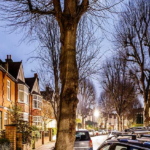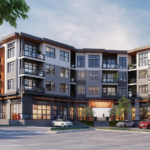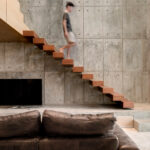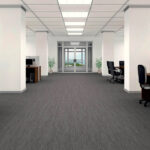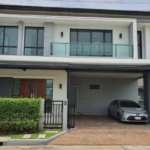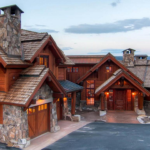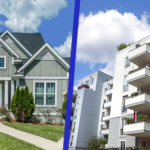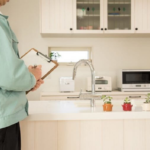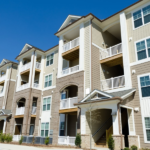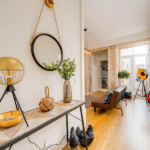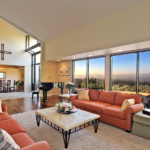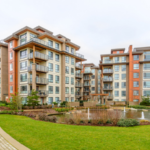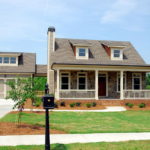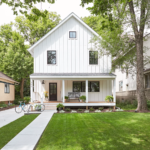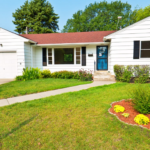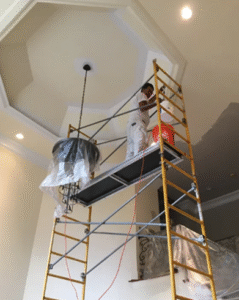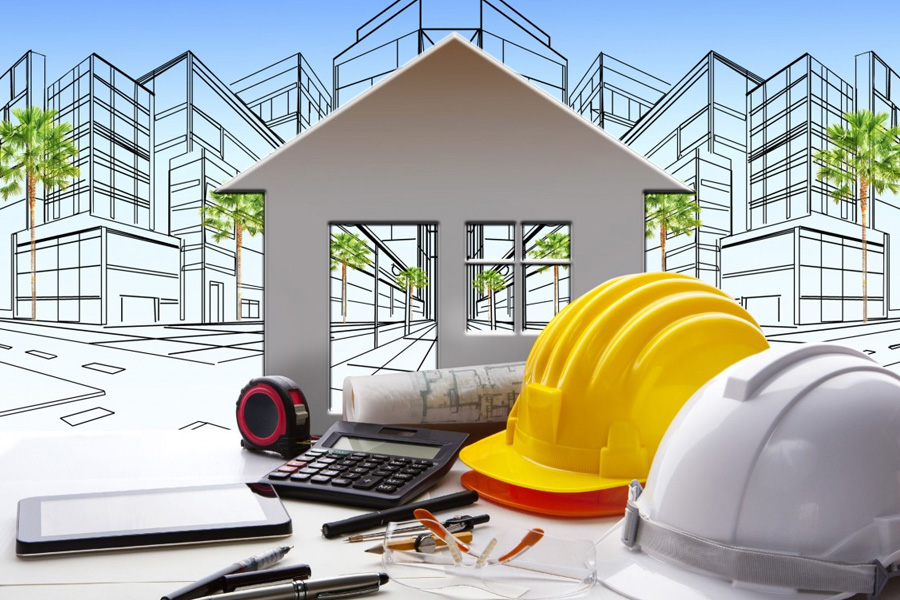
Creating beautiful and functional environments requires more than just decoration. Professional design services blend aesthetic vision with practical solutions to transform ordinary rooms into exceptional spaces. This approach considers how people truly live and work within their surroundings.
The discipline encompasses various specialisms working together harmoniously. Spatial planning, colour theory, and material selection combine with lighting and furniture specification. Each element contributes to a cohesive result that reflects individual character while enhancing daily life.
Expert guidance helps navigate challenges like budget considerations and project timelines. Whether for residential renovations or commercial projects, professional input ensures every space reaches its full potential. The focus remains on delivering environments that are both visually striking and practically sound.
This comprehensive approach considers architectural features, natural light, and circulation patterns. It develops solutions that respond to specific user requirements. The result is a thoughtfully planned space that achieves its intended purpose with style.
Key Takeaways
- Professional design blends aesthetic vision with practical functionality
- The discipline encompasses multiple specialisms working in harmony
- Expert guidance helps navigate budget and timeline challenges
- Solutions are tailored to both residential and commercial projects
- The approach considers architectural features and user requirements
- Focus remains on creating visually striking yet practical environments
- Thoughtful planning ensures spaces achieve their full potential
Introduction to Transforming Interiors
The journey of reshaping a room starts with a deep appreciation for how people connect with their surroundings. Thoughtfully planned environments significantly boost wellbeing, productivity, and overall quality of life. This connection forms the foundation of any successful transformation.
The process involves a detailed analysis of existing conditions in homes and other spaces. Professionals identify opportunities for improvement. They then develop creative solutions that balance aesthetic desires with practical needs.
This professional discipline draws on vast knowledge of spatial relationships and material properties. It uses colour psychology and historical movements to inform modern ideas. The goal is always to create environments that are both purposeful and delightful.
Successful change relies on clear communication. Initial consultations gather crucial information. This ensures the final plan for the interiors is cohesive and truly reflects the client’s vision.
Key Considerations for Spatial Transformation
| Consideration | Focus | Impact |
|---|---|---|
| Architectural Context | Working with existing features and layout | Ensures a harmonious and integrated result |
| Lighting Conditions | Balancing natural and artificial light sources | Defines atmosphere and functionality |
| Spatial Flow | How areas connect and movement patterns | Enhances usability and comfort |
| Client Collaboration | Translating visions into tangible outcomes | Guarantees personalised and satisfying results |
This foundational knowledge prepares for exploring specific concepts and methodologies. It highlights the transformative power of a well-considered approach. Every element, from lighting to layout, works together to unlock a space’s full potential.
Exploring the World of Interior Design
Becoming a professional in this discipline involves rigorous training that balances imaginative exploration with practical, real-world application. Formal education focuses on building environments using analogue, digital, and virtual tools. This approach fosters creative and critical thinking about the crafting of spaces.
Professional programmes are often intimate, accommodating around 35-40 students annually. This size facilitates creative cohesion and allows tutors to support individual aspirations. Staff typically combine active practice, research, and teaching, bringing valuable, current industry experience into the learning place.
The field itself is remarkably diverse. A qualified designer can specialise in various sectors, each with unique demands.
- Residential and commercial projects
- Hospitality and retail environments
- Healthcare and institutional settings
This breadth requires a specialist knowledge of regulations and distinct considerations. Practitioners develop expertise through continuous engagement with evolving trends and sustainable practices.
The role integrates many skills. Spatial planning, technical drawing, and 3D visualisation are essential. So too are material specification, project management, and client liaison.
Ultimately, this profession operates at the intersection of art, architecture, and functionality. It requires balancing a creative vision with practical constraints like budgets and timelines. The collaborative nature means working alongside architects, engineers, and other consultants to ensure a seamless result.
Design Concepts and Trends for Modern Interiors
Today’s most successful room transformations stem from thoughtful integration of aesthetic principles with practical considerations. Current approaches embrace creative techniques that enhance both visual appeal and daily functionality.
Innovative Aesthetics in Contemporary Settings
Modern styling incorporates bold elements like wallpaper on pitched ceilings to highlight architectural features. Internal windows and Crittall doors improve light flow while creating cosy, defined areas.
These approaches demonstrate how attention to detail elevates ordinary spaces. Sculptural furniture pieces serve as focal points while contributing to the overall narrative.
Integrating Functionality with Style
Practical considerations include maximising sofa sizes where floor space permits. This approach ensures comfort without compromising circulation patterns.
Mixing traditional elements with contemporary accents creates sophisticated, eclectic environments. The result is spaces that feel both curated and genuinely personal.
These design tips help achieve the perfect balance between beautiful aesthetics and functional effectiveness. Every element works together to create harmonious living environments.
Budget-friendly Interior Transformations
Budget-conscious homeowners can achieve stunning results through careful planning and resourceful shopping. Financial constraints often inspire creative solutions that deliver impressive room makeovers without excessive expenditure.
Cost-effective Styling Techniques
Strategic shopping forms the foundation of affordable transformations. Second-hand marketplaces offer sinks and baths for under £100, while vintage furniture pieces create unique character.
Paint provides dramatic changes at minimal cost. Transforming woodwork or creating accent walls completely reimagines a space’s atmosphere. These approaches demonstrate that smart choices outweigh large budgets.
For comprehensive guidance, many seek professional affordable interior design tips that prevent costly mistakes. Services start from £195 for layout consultations.
Budget-friendly Transformation Options
| Approach | Cost Range | Key Benefits |
|---|---|---|
| DIY Painting & Updates | £50-£200 | Instant visual impact, renter-friendly |
| Second-hand Shopping | £100-£500 | Unique pieces, significant savings |
| Professional Design Packages | £195-£395 | Expert guidance, optimal budget allocation |
| Phased Room Makeovers | Variable | Spreads costs, maintains momentum |
Unfitted kitchens using collected vintage pieces offer flexible alternatives to expensive installations. Wall lamps provide stylish lighting without surface consumption.
These budget-friendly options prove that remarkable home transformations are accessible at various price points. The key lies in prioritising high-impact elements and strategic shopping.
Customised Services and Unique Designs
Customised design solutions reject one-size-fits-all approaches in favour of personalised strategies. Every client presents distinct challenges that demand tailored responses rather than formulaic templates.
Professional designers invest significant time understanding individual lifestyles and aesthetic preferences. They develop solutions that genuinely reflect and serve their clients’ specific requirements.
Bespoke services encompass comprehensive support from initial consultation through to project completion. This includes moodboard creation, smart space planning, and detailed 3D visualisations.
Unique designs emerge from combining client vision with designer expertise. The collaboration addresses particular spatial challenges while capitalising on distinctive architectural features.
Clients can select their preferred level of involvement in the service. Options range from full project management to consultancy-only packages.
The process maintains regular presentations and feedback opportunities. This ensures the final room transformation aligns perfectly with evolving preferences.
Designers leverage industry connections to source exclusive materials and custom furniture. These elements create truly unique spaces unavailable through standard retail channels.
Tailored solutions address specific functional needs like technology integration or accessibility requirements. The value extends beyond aesthetics to include practical longevity considerations.
Incorporating Artistic Elements into Your Space
Artistic expression moves a room beyond mere utility, infusing it with character and narrative. These elements transform a functional area into a personal sanctuary that reflects one’s style and way of life. This approach considers every detail as a potential contributor to the overall story of a home.
Colour and Texture as Storytellers
Colour acts as a powerful emotional anchor. A dependable base like blue, which sits opposite orange on the colour wheel, creates a calming foundation. It pairs beautifully with earthy, sun-baked shades while remaining versatile with cool tones.
Texture adds a vital, tactile layer to any scheme. Contrasts between smooth plaster and rough wood, or soft fabrics against hard metals, create dynamic visual interest. These combinations engage the senses and build sophistication.
Art as a Focal Point in Interiors
Artwork provides a natural centrepiece, anchoring the entire design. Its placement is crucial, considering viewing angles, light, and scale relative to furniture. A striking piece can establish a colour palette that is then echoed subtly throughout the space.
Contemporary display methods are highly creative. This includes leaning large canvases against walls or creating eclectic gallery walls. Even everyday items like silk scarves or vintage textiles can become art when framed thoughtfully.
Artistic Element Applications
| Element | Application | Impact |
|---|---|---|
| Colour Schemes | Using artwork to inspire wall and furnishing colours | Creates a cohesive and harmonious environment |
| Textural Layers | Combining various materials like rugs, cushions, and finishes | Adds depth and a rich, inviting feel |
| Art Placement | Strategic positioning relative to light sources and furniture | Maximises visual impact and creates a focal point |
This creative approach demonstrates that personal expression is key to a successful interior scheme. It proves that impactful design is accessible to everyone.
Studio Burntwood Spotlights on Innovative Design
Forward-thinking practices in environmental styling blend creative experimentation with rigorous functionality. This approach challenges conventional thinking while ensuring spaces remain practical and user-friendly. The philosophy prioritises originality and creative risk-taking.
Professional designers develop unique spatial solutions that distinguish projects from generic commercial environments. They integrate emerging technologies and sustainable materials into their work. This creates memorable, impactful spaces that push boundaries while remaining accessible.
Innovation encompasses both aesthetic novelty and improved functionality. It addresses complex spatial challenges with technical expertise. The team’s experience allows them to balance creative vision with practical requirements.
Research and experimentation lead to breakthrough solutions. Professional teams maintain awareness of international developments and emerging trends. They filter these influences through client needs and project context.
Recognition through publications and awards validates these innovative approaches. It establishes reputations for excellence that attract discerning clients. Studio Burntwood exemplifies this commitment to distinctive, forward-looking environmental solutions.
Integration of Traditional and Contemporary Styles
The fusion of period charm and contemporary flair offers a sophisticated approach to room styling. This method creates layered, sophisticated spaces that honour architectural heritage while embracing modern living requirements. It reflects how people actually accumulate possessions over time, blending preferences from multiple aesthetic movements.
Successful integration requires understanding the underlying principles of each approach. Traditional elements like architectural mouldings and classic furniture provide gravitas and historical context. Contemporary additions such as minimalist pieces introduce freshness and relevance. The juxtaposition creates visual tension that enlivens homes.
Practical applications include pairing elaborate ceiling roses with modern pendants or classic beds with punchy upholstery. Colour serves as an effective unifying tool when mixing style periods. A consistent palette applied across traditional and contemporary elements creates visual harmony despite formal differences.
This approach typically involves a dominant style with accent pieces from another era. This maintains clarity of vision while introducing variety. The result is interior schemes that feel interesting and eclectic rather than monotonous.
The most engaging homes mix traditional pedigree with modern playfulness. This balanced design philosophy creates spaces that feel both curated and genuinely personal. It represents one of the most effective ways to achieve characterful living environments.
Burntwood Studio Expertise in Space Planning
Strategic room organisation begins with understanding daily routines and movement. This approach ensures every area serves its purpose effectively while maintaining visual harmony. The process considers how people naturally interact with their surroundings.
Thorough analysis examines existing conditions like dimensions, ceiling heights, and light patterns. Professionals assess structural elements and circulation paths at different times. This detailed evaluation forms the foundation for intelligent spatial solutions.
Human ergonomics and furniture clearances receive careful consideration. Arrangements must accommodate movement while supporting various activities. The goal is creating comfortable, practical environments that meet specific client requirements.
Expert planning determines when to open areas for flow or create distinct zones. Internal windows and Crittall doors maintain light while defining cosy spaces. This balanced approach preserves privacy where needed without sacrificing connectivity.
Furniture placement guides circulation and creates natural groupings. Maximising sofa sizes in living rooms utilises empty floor space effectively. Strategic positioning avoids awkward gaps while enhancing functionality.
Vertical space utilisation incorporates storage solutions reaching upward. Walls serve both practical and decorative purposes where ceiling heights permit. This comprehensive thinking extends to technical considerations like heating and electrical services.
Multiple room planning requires holistic thinking about relationships between areas. Logical progression through homes ensures coherent design language throughout. Public and private zones maintain appropriate separation while feeling connected.
The expertise of Burntwood Studio incorporates flexibility for future adaptation. Well-planned spaces accommodate changing needs without major restructuring. This forward-thinking approach delivers lasting value beyond immediate requirements.
Leveraging Technology in Interior Design
Modern technology has revolutionised the creative process for styling living spaces. It offers powerful tools that enhance collaboration and visualisation between the client and the designer.
This digital approach streamlines the entire project workflow. It provides clarity and confidence before any physical changes begin.
3D Visualisations and Moodboards
Photorealistic 3D renders allow clients to virtually walk through their proposed room. They see accurate furniture placement, lighting, and material finishes.
Moodboards are another essential digital tool. They assemble colours, fabrics, and images to define the aesthetic direction clearly.
These visual aids answer important questions early. They ensure everyone shares the same vision for the space.
Digital Consultation Trends
Remote consultations are now a standard part of the design process. Video calls and screen sharing make collaboration seamless, regardless of location.
Designers can work on multiple rooms concurrently. Express services can deliver complete plans in as little as ten working days.
This efficient use of technology saves time and simplifies decision-making. It makes professional interior design services more accessible than ever.
Personalised Room Designs and Solutions
Professional designers collaborate closely with clients to shape their perfect dream rooms. This partnership creates spaces that reflect individual lifestyles rather than following generic templates.
The process begins with comprehensive consultations. Designers gather accurate room measurements and photos from every angle. They discuss how each space is used and what emotional qualities clients wish to cultivate.
Dream room realisation involves translating aspirations into practical designs. The approach balances aesthetic desires with budget realities and spatial constraints. This ensures achievable solutions for every project.
Room-by-room design allows focused attention on individual spaces. Schemes respond to specific conditions like natural light and architectural features. The method addresses unique challenges such as awkward shapes or multipurpose requirements.
Personalised Room Design Process Timeline
| Phase | Duration | Key Activities |
|---|---|---|
| Initial Consultation | 1-2 days | Room assessment, client brief development |
| Concept Development | 5-7 days | Moodboards, spatial planning, material selection |
| Refinement & Visualisation | 7-10 days | 3D renders, client feedback integration |
| Final Documentation | 3-5 days | Purchasing guidance, implementation support |
Express services deliver complete plans within ten working days. Standard room design averages three weeks per space once briefs are finalised. Multiple rooms can be handled concurrently while maintaining individual focus.
This personalised approach ensures solutions reflect genuine taste rather than prescriptive trends. Clients seeking help with one room often return for additional spaces. The flexibility makes professional design accessible through incremental budget management.
Inspirational Case Studies and Project Highlights
Before and after comparisons reveal the remarkable potential hidden within ordinary rooms. These visual records demonstrate how professional intervention can completely reimagine a space.
They show the journey from initial consultation to stunning completion. This documentation provides tangible evidence of what a bespoke service can achieve.
Before and After Transformations
One recent project involved a dated Victorian terrace. The client had specific requirements for modernising their family home while preserving character.
The designer created a complete design that opened up cramped rooms into flowing living spaces. Natural light was maximised through strategic alterations.
Another case study featured a compact city apartment. Clever storage solutions and multi-functional furniture transformed the experience of urban living.
Notable Project Transformations
| Property Type | Key Challenge | Design Solution |
|---|---|---|
| Period Cottage | Low ceilings, dark rooms | Light colour palette, clever lighting |
| Modern Flat | Limited floor space | Custom built-in storage, flexible layout |
| Family Home | Needed zoning for different activities | Room dividers, distinct colour schemes |
Client Testimonials for Success
Client feedback highlights the personal support received throughout the process. Many note how their initial concerns were addressed with professionalism.
One homeowner stated they would like to acknowledge the attention to detail. Their project was completed ahead of the scheduled date.
Testimonials frequently mention the improved functionality of their rooms. The emotional benefit of living in a well-designed home is a common theme.
This authentic feedback builds confidence for prospective clients considering the service.
Conclusion
Professional guidance in shaping residential environments delivers both immediate visual impact and long-term functional benefits. Today’s interior design services offer flexible engagement models that accommodate various budgets and timelines.
The collaborative process typically takes around three weeks per room, with express options available for urgent needs. Comprehensive support extends from initial consultation through to implementation.
Investing in professional interior design enhances property value while creating spaces that truly reflect personal identity. The right service transforms any home into an environment that supports wellbeing.
Whether addressing one room or multiple areas, professional teams provide tailored solutions. Taking that first step can transform your living home into the space you’ve always envisioned.
FAQ
What is the typical process for a residential interior design project?
The process usually begins with an initial consultation to understand the client’s vision, budget, and requirements. This is followed by a detailed planning phase, which may include space planning and creating moodboards. Next comes the implementation stage, where furnishings are sourced and the transformation takes place. The timeline can vary from a few weeks for a single room to several months for an entire home.
How can I achieve a stylish look for my space on a limited budget?
A> There are several cost-effective ways to refresh a room. Focusing on key elements like a new colour scheme, strategic lighting, or repurposing existing furniture can make a significant impact. Many designers offer services tailored to smaller budgets, providing expert advice on affordable styling techniques and smart shopping tips to maximise your investment.
What are the benefits of hiring a professional designer versus doing it myself?
A professional brings expertise in space planning, access to trade-only resources, and a streamlined process. They help avoid costly mistakes and save you time by managing the entire project. Their support ensures a cohesive style throughout your home and can transform your ideas into a functional, beautiful reality that meets your specific needs.
Can you work with a client’s existing furniture and décor?
Absolutely. Many projects successfully integrate a client’s favourite pieces with new items. A skilled designer will assess your existing furnishings and art to create a harmonious plan. This approach is not only budget-friendly but also adds a personal, layered feel to the space, making it truly feel like home.
What is the advantage of using 3D visualisations in the design process?
3D visualisations allow you to see a realistic preview of your finished room before any work begins. This technology helps in making confident decisions about layouts, colours, and furnishings. It minimises surprises and ensures the final result aligns perfectly with your dream, providing invaluable peace of mind throughout the planning stages.
Do you offer services for commercial spaces as well as homes?
Yes, many design studios extend their expertise to commercial projects, including offices, retail spaces, and hospitality venues. The principles of creating functional, inspiring environments apply to all types of spaces. The specific requirements and goals for a commercial project are discussed in detail during the initial consultation.




